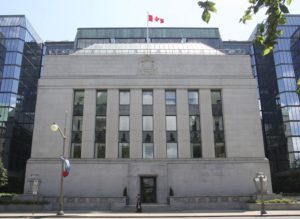What is Bank of Canada?
 The central bank established by the nation of Canada. One of the bank’s core functions is the design, issuance, and distribution of Canada’s banknotes. The Royal Canadian Mint issues Canadian coins.
The central bank established by the nation of Canada. One of the bank’s core functions is the design, issuance, and distribution of Canada’s banknotes. The Royal Canadian Mint issues Canadian coins.
The Bank of Canada (BoC) or Banque du Canada was established in 1934 under the Bank of Canada Act. It is a Crown corporation, a state-owned entity under the headship of the sovereign of Canada, and it is Canada’s central bank. The Bank of Canada oversaw the Foreign Exchange Control Board and the War Finance Committee to raise funds for the war effort during World War II.
The headquarters of BoC is located in Ottawa, Ontario, Canada. The building that currently houses the headquarters used to be the home of the Bank of Canada Museum. The BoC is responsible for establishing financial guidelines, outlining the promotion of a sound financial system, and outlining Canada’s monetary policies. The Canadian government uses the BoC to manage money and utilizes its banking services. Also, the BoC lends money to most Canadian financial institutions.
The Bank of Canada has some unconventional financial policy measures after reviewing how other banks responded to the global financial crisis. These measures are set in place to help the Bank of Canada navigate any future economic crisis.
These unusual policy measures are set forth as follows:
- Guidance on how to move forward on the future path of the policy rate
- The means to encourage economic growth through the large scale acquisition of assets, which is also known as quantitative easing
- Setting up monetary funds to ensure economic institutions have access to credit.
- Adjusting the policy rate to below zero to stimulate spending.
See Also…
Banknotes, Notaphily, Royal Canadian Mint Gold
Back to All Terms
